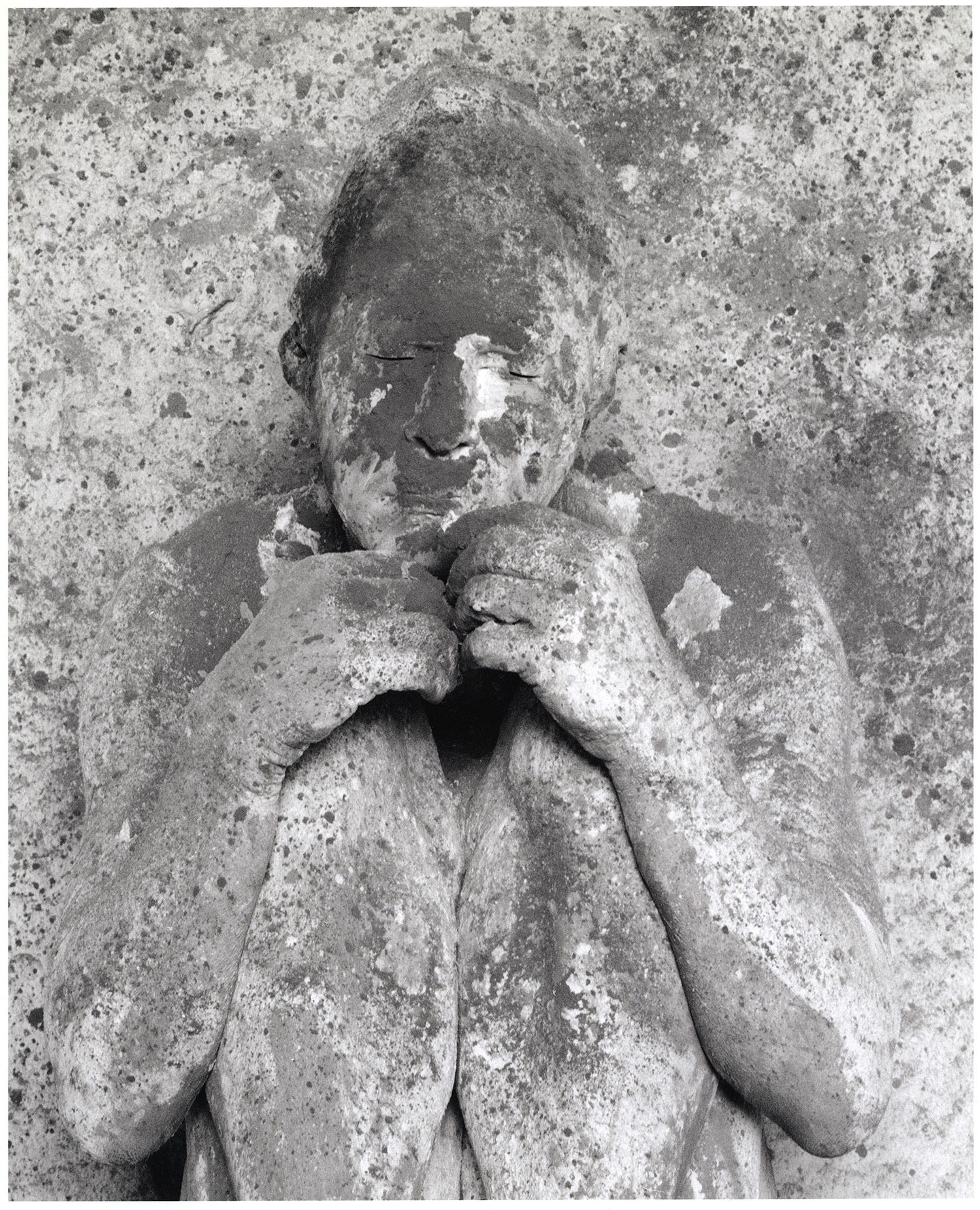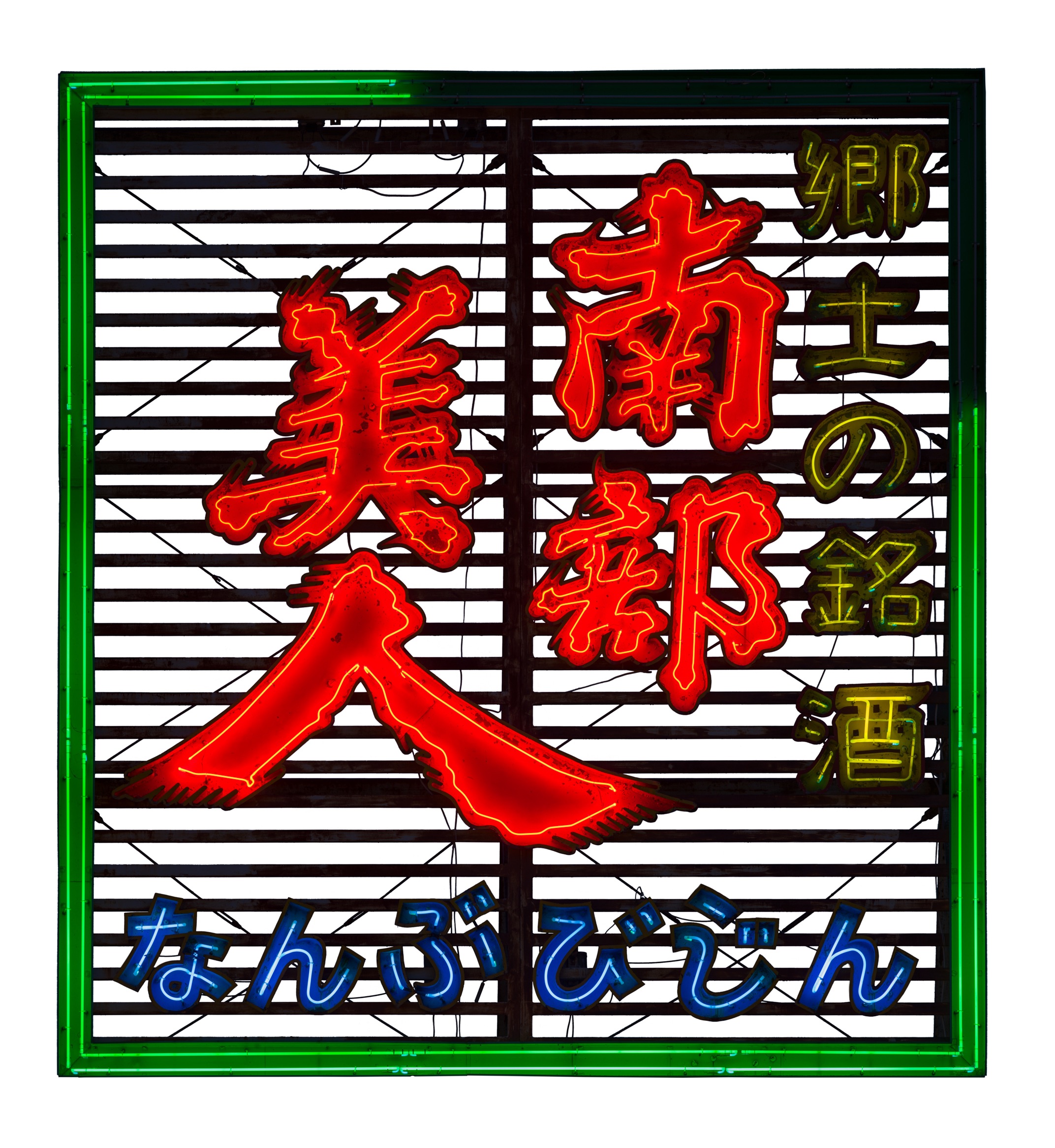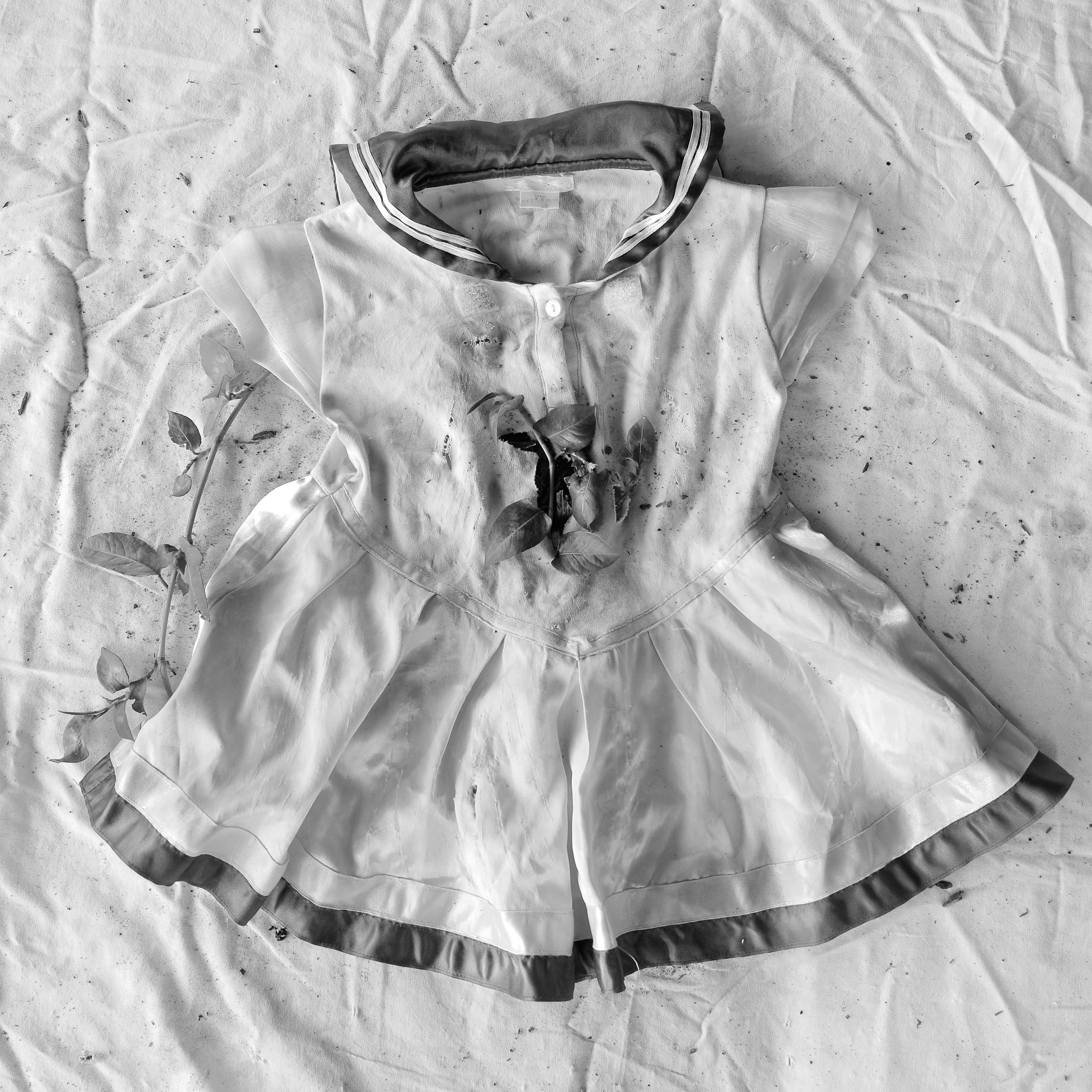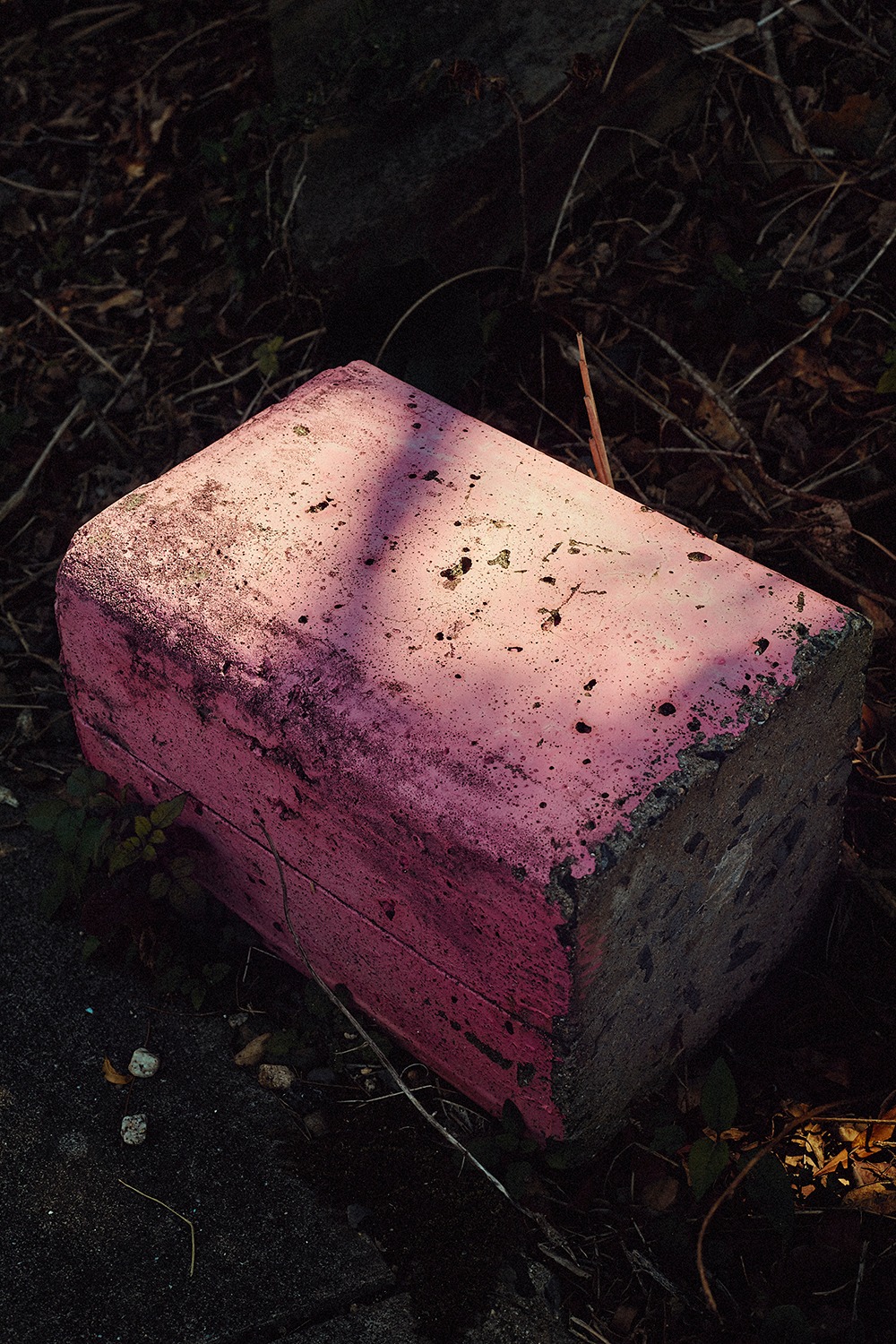
19
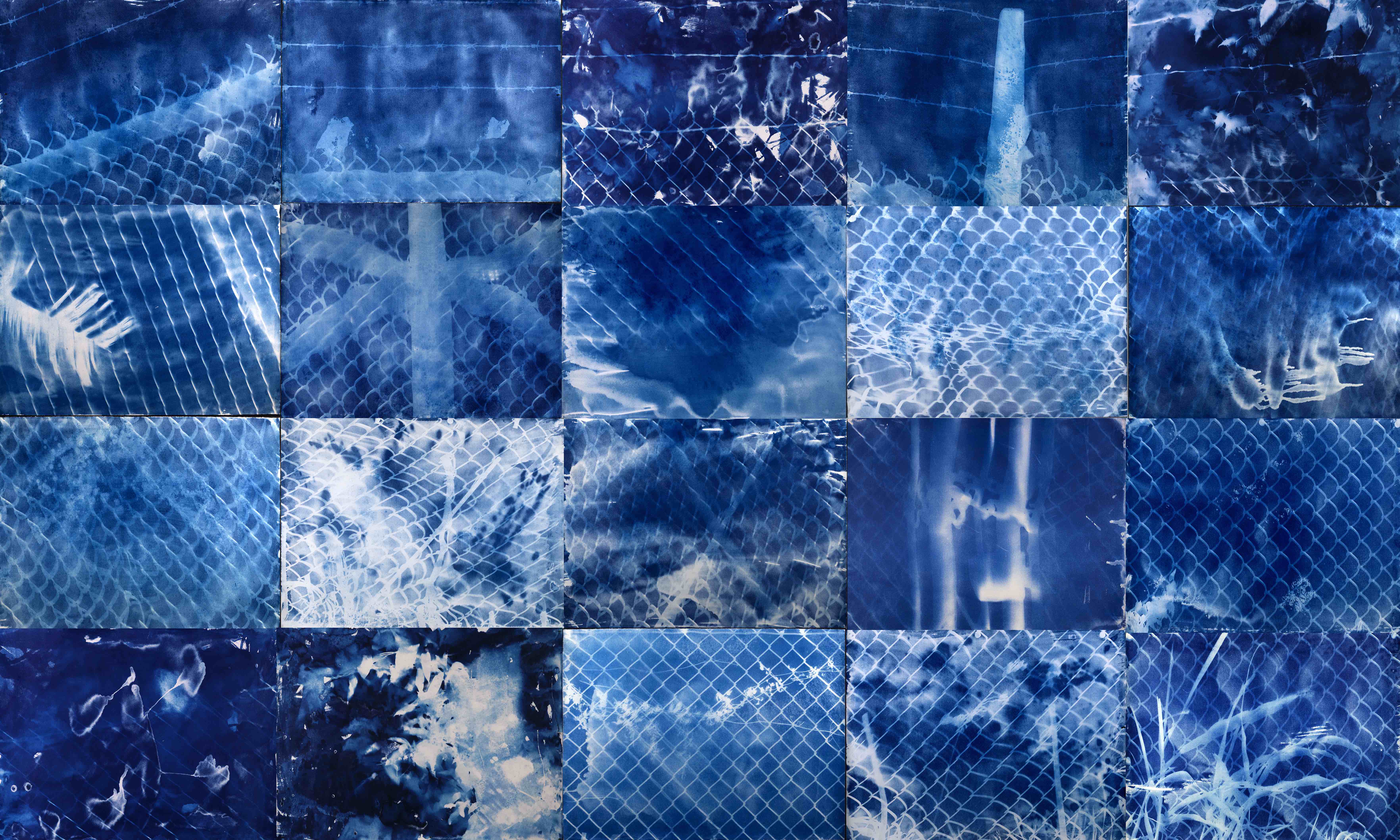
オサム・ジェームス・中川、タイラジュン
Osamu James Nakagawa, Taira Jun
UNDERFOOT
galleryMain is pleased to present UNDERFOOT, a two-person exhibition by Osamu James Nakagawa and Jun Taira.
Osamu James Nakagawa, a photographer based in the United States, presents works examining his cross-cultural identity; intersecting issues related to Japan and the United States. Jun Taira, a photographer born and raised in Okinawa, looks at the current landscape built upon its own history; maintaining a careful distance with a sense of responsibility for the past. Over fifteen years, the work of these two photographs has been in dialogue.
In the time of the changing world, the accumulated concept in the works of the two artists, America, Okinawa, and Japan, will intersect in this exhibition.
The exhibition consists of three works: Shell Mound, Gama, and Fence.
Shell Mound is a series of photographs of mounds constructed for dismantling unexploded ordnance. The unexploded ordnance is still found everywhere in Okinawa and has the potential to explode even today. Nearly 80 years after the Battle ofOkinawa, the unexploded ordnance appears in the daily life of Okinawans, confronting them with the reality that the war never ended.
The images in the Gama series are high-resolution digital photographs of a sacred limestone cave in Okinawa made visible with a single flashlight illuminating the darkness. Since ancient times "gama" have served as sacred places where one can come into contact with the spirits of one’s ancestors. The Gama shown in this exhibit has a tragic history, having been used as an evacuation shelter during the war. It evokes memories of the war, an invisible past Nakagawa drew out with "painted" light and digital manipulation.
The Fence installation was created using photosensitive cyanotype paper attached directly to the fence of the US military base on the mainland of Okinawa. Challenging the symbol of power and the fence surrounding the US military base in Okinawa, Nakagawa chose to expose photographic paper directly onto the fence, producing a trace of light that is a life-size installation to create a visceral experience for the viewer.
The title of this exhibition, "UNDERFOOT," ties together these three works. It represents the connection that bridges past and present, reminding us of what is "under our feet." Okinawa remembers the past war, the mounds that still appear in the city as the scars of war, and the towering fences of US military bases that seem to reject those memories; history lurking in present-day Okinawa.
I hope the memories that are here and there, and the memories that are now and then will intersect in the gallery and open up new imaginations for the viewers.
Gama was created between 2008 and 2011, touring the world since its first showing at the Houston International Fotofest in 2012. In Japan, a solo exhibition at Kyoto University of the Arts Gallery Aube (2013) was developed as part of the Okinawa trilogy and was also exhibited at the Tokyo Photographic Art Museum's "From the Cave" exhibition (2019).
In Okinawa, limestone caves called "gama" are found throughout the islands, formed by the erosion of Ryukyu limestone, which is widely distributed in the Nansei Islands.
This series was created using a hi-resolution medium format digital camera in the darkness of gama caves. While walking around in the gama with a flashlight in hand, tracing the wall's surface with light, slowly exposing the entire interior of gama caves. In the post-production stage, a great deal of time was spent adjusting the colors and details inside the gama to reveal the blackness of the burnt walls, the medicine bottles left on the ground, the grenades, the fragments of the teacups, and even the human remains emerging from the darkness. When creating Gama, I was conscious of painting with light, shaping the interior, and trying to see the invisible. Through a complicated and long production process, memories of past wars are evoked, as well as hidden pasts that conventional photographic processes are unable to capture.
The Fence installation was exhibited at the Hamburg Triennale last year, and this exhibition is the first time shown in Japan. It is a drastically different approach from the digitally manipulated photographic work I created in the past. Gama's high-resolution and meticulous detail gave a stunning view inside the cave while simultaneously creating a visual illusion and physical sensation of presence for the viewer. For example, some people even touched the print to check the unevenness of the print surface during the exhibition. This led me to begin thinking about the materiality of photography and the physical relationship between the artist, the photographic print, and the audience.
At one point, I had the opportunity to enter the U.S. military base in Futenma, and the possibility of a new project emerged. However, access was denied due to a disagreement with the public affairs officer who felt that the photographs should reflect a positive depiction of the base and that its existence is necessary for the Okinawan community so there would be no conflict. I was furious but inspired me to do something about it.
I decided to explore the U.S. bases in mainland Okinawa over the three years from 2013 to 2015, piercing onto the photographic paper directly to the military fences and exposing 93 cyanotype photograms made with Okinawan shell ginger paper.
Ultimately, it may have been a suitable way to direct my anger at the base.
Unlike photographs taken through a lens, it adds physical reality when the traces of light drawn on photographic paper are directly touching and damaged by barbed wire from a fence. With this exhibition, I am presenting a close to the actual size depiction of the military Fence in Okinawa.
Osamu James Nakagawa(b1962) was born in New York City and raised in Tokyo. He returned to the United States, moving to Houston, Texas, at the age of 15. He received a Master of Fine Arts from the University of Houston in 1993. He is the Ruth N. Halls Distinguished Professor of Photography at Indiana University. Nakagawa's career as an artist began in 1990's; he is known for cross-cultural works exploring history, geopolitics, memory, and personal identity, including his own transnational experience.
Nakagawa is a recipient of the 2009 Guggenheim Fellowship, the 2010 Higashikawa New Photographer of the Year, and 2015 Sagamihara Photographer of the Year in Japan. Nakagawa's work has been exhibited internationally, recent exhibitions include, Eclipse: Osamu James Nakagwa, PGI, Tokyo(2018); Currency: The 8th Triennial of Photography Hamburg, Halle fur Aktuelle de Kunst-Deichtorhallen, Hamburg(2022); From the Cave, Tokyo Photographic Art Museum(2019); Photography to End All Photography, Brandts Museum, Denmark(2018).
He lives and works in Bloomington, Indiana, U.S.A.
Jun Taira(b.1972) is a photographer and gallery/cafe owner born and lives on Okinawa's main island. He graduated from the Osaka University of Foreign Studies in 1999. Taira published the photography magazine LP Magazine as editor-in-chief from 2007-2012. He is working on a community-based art project protesting the coastal reclamation in Urasoe, Okinawa. In addition, by curating numerous art exhibitions at his gallery/cafe under Taira's leadership, the artists are working together to raise awareness of the harmful environmental effect it may cause on the land, ocean, and communities.
galleryMain



